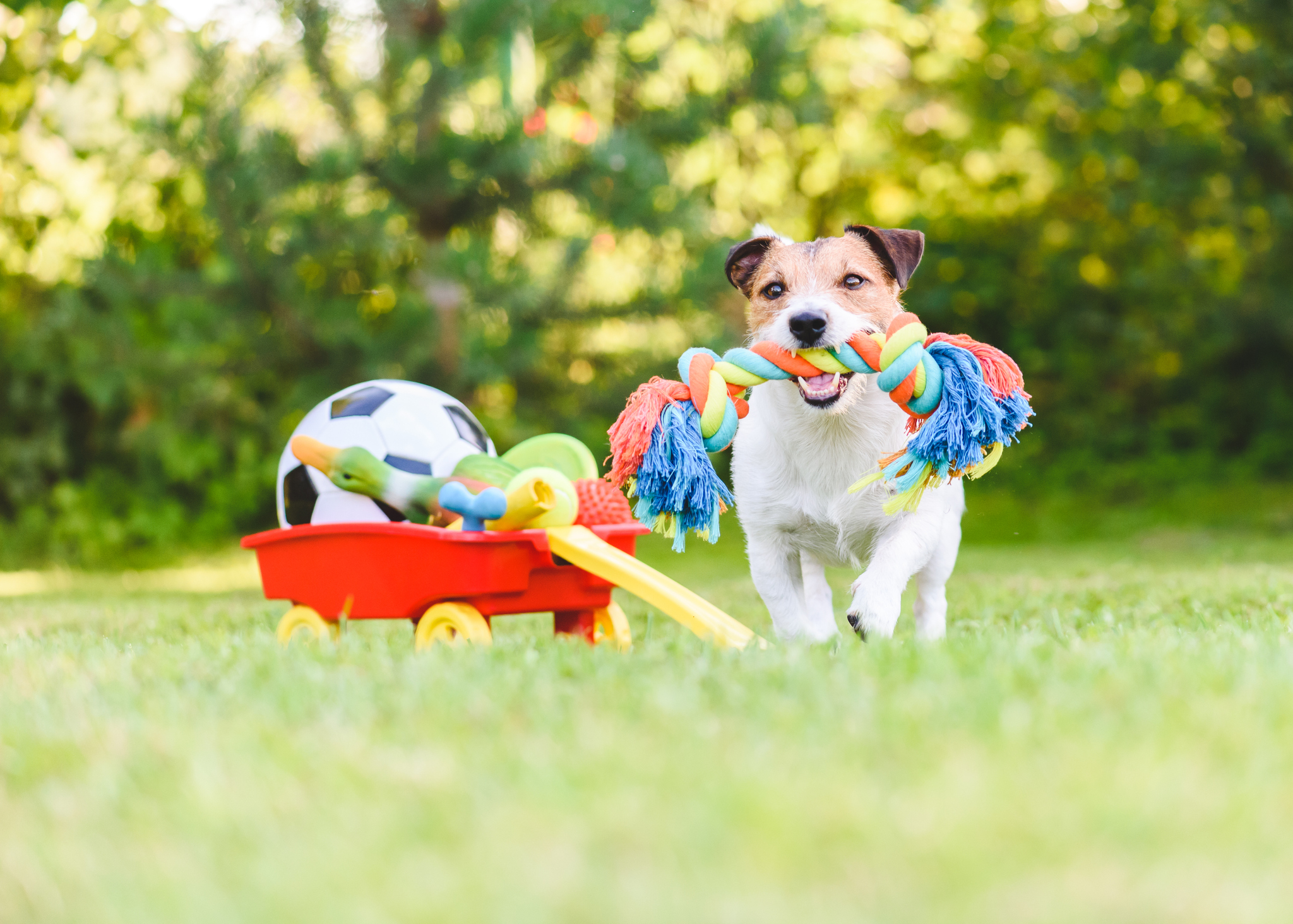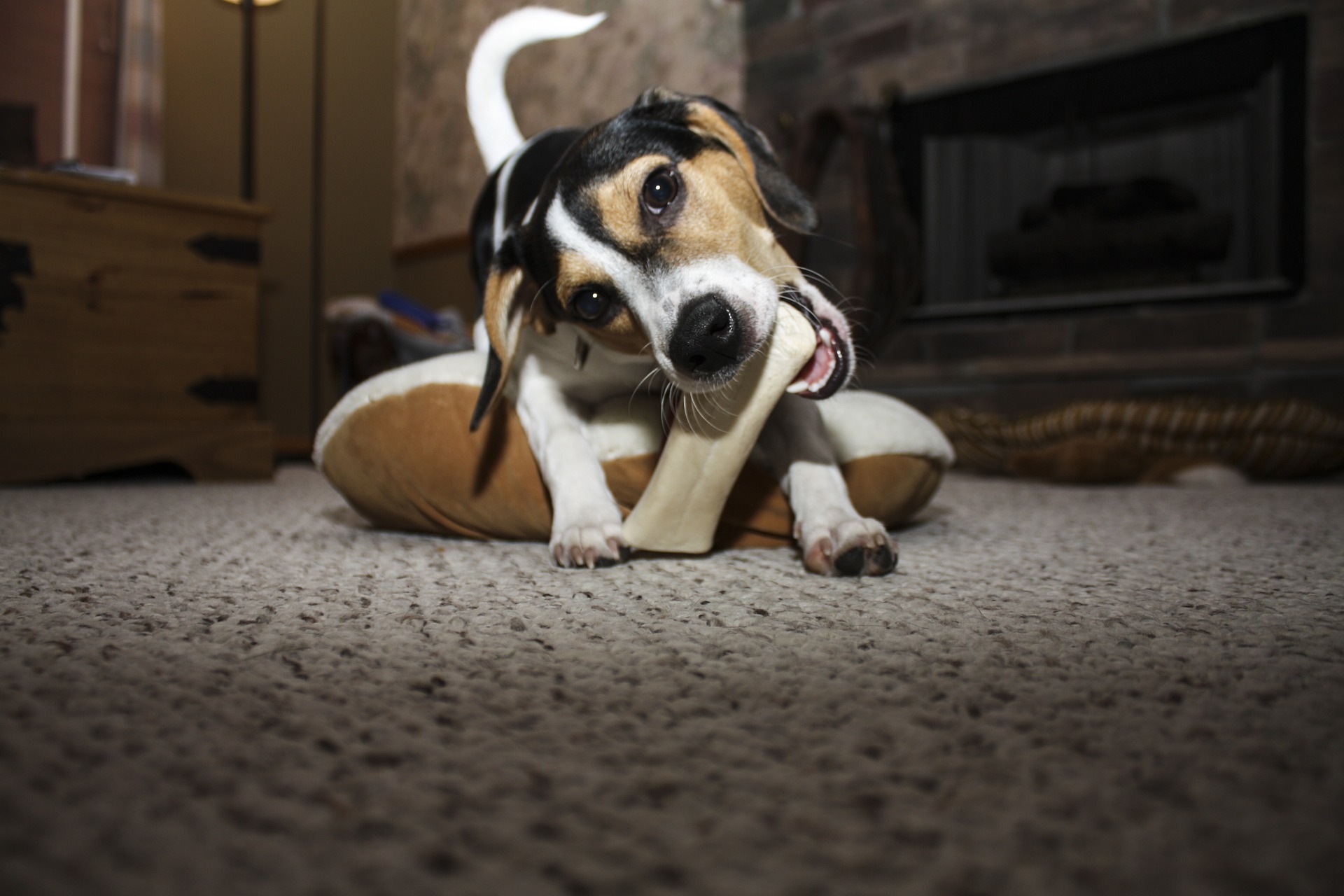Canine Enrichment, What is it? Why is it important?

By Sandy Modell
Alexandria, VA – Does your dog return from a long walk seemingly more ramped up than before the walk? Don’t wait for him to expel his pent-up energy doing zoomies up and down the halls or bouncing off the furniture. Canine behavioral scientists tell us that while physical activity is critical to your dog’s overall health, dogs also need and love to exercise their brains. This mental stimulation is often referred to as “enrichment.”
Fortunately, today we are more educated about the importance of adding enrichment into your dog’s daily routine. Canine enrichment is essential because it offers a range of health benefits and strengthens the bond between you and your companion. If you want to tire out your dog and teach him new ways to expend that mental energy, here are a few pointers to help you get started:
1. Ditch the Bowl – When I look at a cup of kibble, which may be 40-50 pieces of food, I see 40-50 training opportunities that my dog would otherwise inhale in just a few minutes. Food is a dog’s biggest motivator. Why not use food for training and enrichment? Instead of feeding him twice a day out of his bowl, use some or all of your dog’s daily allotment in enrichment activities. Slow feeders, snuffle mats, food puzzles, and treat-dispensing toys are great options to sharpen your dog’s problem-solving skills, slow the speed of food intake, and provide fun, healthy, and interactive ways to get his daily nutrition. My dog’s favorites are the Bobalot and the Barnacle.
You can use his food to make: a) frozen kongs (check out kong.com for recipes), b) stuffed non-cooked, sterile bones, and c) homemade DIY enrichment toys. One cool FB group to get your creative juices flowing is www.facebook.com/groups/canineenrichment/.
2. Training – Dogs do whatever works for them—behaviors that are not always what we want. Training new good behaviors, teaching how to engage with you, modulate arousal, observe rather than react to the environment and be a calmer, thinking dog will reduce anxiety and over-excitement while building a better relationship with you.
Training should be fun! Dogs learn best in short increments of time, so integrate training into your daily routine. Practice focus and attention exercises for two minutes before the walk. Play enrichment games for 5-10 minutes. Reward behaviors you like, even when you didn’t ask him to do anything. This is called “capturing,” a strategy for building what science calls a “reinforcement history for the behaviors you want.”
3. Nose Games – “Search games” that teach your dog to use his natural scent abilities to find tasty treats generate lots of mental stimulation. Hide treats around the room, then send your dog to “search!” Give enthusiastic praise each time he finds one. Make your “hides” obvious until he understands the game, then hide the treats in increasingly difficult places. If your dog doesn’t have a strong stay behavior, work on that too.
Another fun game is “Find It!” It’s easy to play as you can’t go wrong when sniffing and food are involved! Show your dog a treat, toss it and say, “Find it!” As he turns back to you, mark his reorientation with a yes! or a click, and toss a treat in the other direction. Repeat. This game builds focus and attention and teaches checking in with you, which are always good.
4. Tug and Fetch – Tug and fetch are classic games not requiring much room. Hallways can be great for fetch games, and tug can be played virtually anywhere. Playing tug with your dog for 5-10 minutes can burn excess energy and offers opportunities to train impulse control and good behaviors. Teach your dog to give or drop the tug toy on cue. Pick it up, put it behind your back, and wait for a calm behavior such as sitting or standing quietly before tugging again. This is great for building your dog’s “off switch,” which, for many dogs, only happens when they are asleep.

Since most of these games and activities can be played indoors, start there. You and your dog will do better without outside distractions. When he knows the games well, go outside. My dog loves playing the Search game in the yard. You can also play Find It! on walks, which will make you more fun to be with.
These are just a few challenging enrichment games and toys to work your dog’s mind, build confidence, sharpen his natural scent abilities, and tire him out. Remember, a tired dog is a good dog!
ICYMI: Back to School Training Tips for Your Furry Friends




